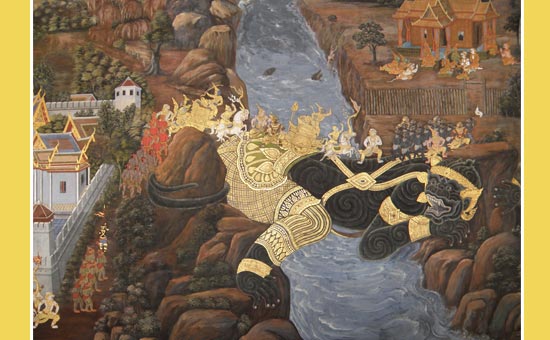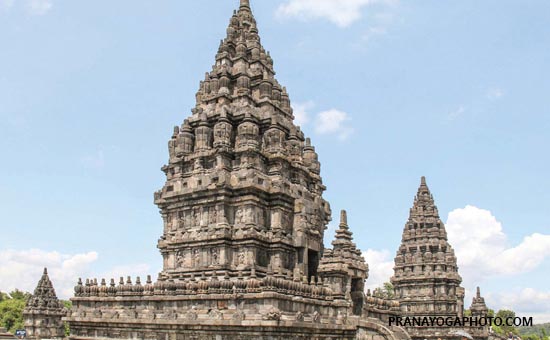- This
article makes a case for the Government of India to promote tourism to
countries of Southeast Asia and Far East.
- It lists down monuments worth visiting and which signify India’s contribution.
India initiated a ‘Look East’ policy when Narasimha Rao was Prime Minister. The reason for looking east was the century long cultural ties between India and these countries.
This article is not about the hits and misses of India’s look east policy but about the Government of India promoting tourism to Southeast Asia and the Far East.
Whilst Thailand is probably the most visited country to India’s east, few have seen the numerous monuments that signify India’s contribution to the culture of Southeast Asia and the Far East.
The
intent of this article is to discover and experience the blending of local and
Indian cultures but not brag about the selfless export of Indian culture.
So how can India promote tourism to countries of Southeast Asia and the Far East?
The
Government of India and tourism board of host country could run a joint
advertising campaign in India to inform Indians about places to visit in each
country. The campaign could promote specific destinations and the country in
general for e.g. promote the Grand Palace Complex in Bangkok but not Phuket, a
beach destination.
A
separate website say www.indialookeast.com
could provide information and promote destinations country wise.
From
the Indian side the facilitating agency could be the Indian
Council for Cultural Relations (ICCR) and Department of Tourism.
An
initial budget of say Rs 50 crore could be set aside for an advertising
campaign that would promote both, monuments that showcase Indian heritage and touristy
places.
So
what should Indians see? Here is a proposed country wise list.
Myanmar
The
ancient city of Bagan was the first capital of the Pagan kingdom between the
9-13th centuries. During its flourishing days between the 11-13th
centuries more than 10,000 Buddhist temples, pagodas and monasteries were constructed.
Today 2,200 survive. The temples are set amongst thick greenery with misty
mountains at a distance. The temple rise above the canopy of trees.
A visit to Yangon is incomplete without visiting the 2,500
year old 326 foot Shwedagon
Pakoda. The stupa is decorated with more than 4,000 diamonds. It is known to
have the hair of Lord Buddha. When the pakoda
shines under the sun it creates a postcard picture that is unforgettable.
A
Fiji Indian, who visited Myanmar recently, fell in love with the country.
Thailand
Thailand
was always popular with Indian tourists. It is interesting to see how Hindu and
Buddhist cultures have intertwined in Thailand.
The
Grand Palace Complex has a miniature Angkor Watt and Emerald Buddha shrine. The
shrine has murtis of Garuda, the vehicle of Lord Vishnu. The grounds of the Royal
Monastery have galleries that are decorated with scenes from Ramakein, as
Ramayana is called in Thailand.
 Lord Hanuman made his body into a pathway to enable Sri Ram’s army to enter Lanka.
Lord Hanuman made his body into a pathway to enable Sri Ram’s army to enter Lanka.
The
Erawan Shrine, also known as Thao Maha Brahma, draws huge crowds. In Thai
Buddha tradition Brahma is associated with creation. The murti has four faces.
In Thailand Brahma is known as Phra Phrom. Next to it is a small shrine
dedicated to Lord Indra. Visit the Trimurthi and Ganesha shrines in Bangkok.
 Erawan Shrine Bangkok.
Erawan Shrine Bangkok.
Ayutthaya, a variation of India’s Ayodhya was Thailand’s greatest ancient city. It has numerous WATS (temples) with the Sleeping Buddha being a major attraction.
Indonesia
Yogyakarta is the city that has produced the magnificent
temples of Borobudur and Prambanan in the 8th and 9th century.
Borobudur is the world’s largest Buddhist monument. “The temple’s design is in Gupta architecture reflects India’s influence in the region, yet there are enough indigenous scenes and elements incorporated to make Borobudur uniquely Indonesian.”
Dedicated to Lord Siva, Prambanan Temple is 47 metres high.
Enjoy the Ramayan Ballet that takes place every evening here.
 Prambanan Temple.
Prambanan Temple.
About three hours from Yogyakarta is Dieng
Plateau i.e. an active volcanic area. “You can wander through bubbling craters and ‘enjoy’ the sulphur smell pretty much undisturbed in the early hours.” And see its many temples. To read more
Mount Bromo in Java is a major tourist attraction of the Tengger region, “drawing visitors from all over Asia wanting to see the spectacular active volcano where they can hike right up to the brim over the smoking caldera. Bromo is named after
Brahma and is a sacred place for Hindus.” Read about Hindus of Java here
Swaminathan A Aiyar wrote, “Indonesia has 21 Jagannath temples recalling its Odisha connection. Jakarta’s National Museum is chock-full of Hindu artefacts but has very few Muslim ones”. Times
of India
Japan
Todaji Monastery in Nara. Nara was the capital of Japan from 710 to 794 A.D. South Indian monk called Bodhisena (also called the "Baramon Sojo" or Brahmin Priest) travelled to Nara from South India. It has a bronze statue of Vairochana Buddha and 26 feet statues of Lord Vishnu and Shiva in Japanese rendition. Source here
Sanjusangen-do is a Buddhist temple in Kyoto is interesting because you get to see Japanese deities and corresponding Hindu deities. Indic scholar Sanjay Rao who has visited Japan often, “Some of the critical Hindu “Guardian Deities “have been exhibited in the Great 120 meter hall, which is 900 years old. These Guardian deities stand on either side of the Avalokiteshwara Deity (The Buddhist God of compassion). The Hindu deities don’t resemble the Indian versions as there were conceptually transplanted about 900 years ago and are carved based on Japanese interpretations of Indian and Chinese Sutras.” Source here
Statute of Bodhidharma (Kenchoji Temple) in Kita Kamakura Tokyo. The
historical Bodhidharma (known as Daruma in Japan) was an Indian sage who lived
5-6th century A.D. He is commonly considered to be the founder of
Zen Buddhism.
 Bodhidharma.
Bodhidharma.
Cambodia
Cambodia is a must visit because it is home to the world’s largest temple complex, Angkor Wat.
It is built in several levels, has huge
bas-relief sculptures that tell the story of the Mahabharata and Ramayana. The
story of Samudra-manthan is repeated here in great detail in bas-relief.
The four towers of the temple – one in each corner – rise to 65 metres through three levels. The big tower stands at the center. At the top now, is an idol of the Buddha. The temple had a huge Vishnu sculpture i.e. now in the museum. It features 5400 sculptures of Apsaras in fascinatingly rich saree-like robes and jewellery.
The National Museum in Phnom Penh is a repository of stone
and metal sculptures of Hindu and Buddhist deities brought from the ruins of
Angkor.
Just like the Government of India promotes tourism to
Myanmar, Thailand, Indonesia, Japan and Cambodia their tourism boards of could
promote the
corresponding deity/icon/temple/circuit in India that relates to the attraction
in the other country so that tourist flow is two way. For example the Buddhist Circuit in India and Nepal, Ajanta and
Ellora Caves, Temples & Monasteries in coastal Odisha etc. This might also motivate
Indian tourists to visit the same places in larger numbers.
This idea would serve numerous objectives. Strengthen
relations with these countries, enhance awareness amongst all of what unites us
culturally and people to people contact. Lastly, more tourists in every country
has positive effects on the economy.
Author is founder www.esamskriti.com
P.S. Some matter taken from tourism websites of respective
countries. All credits lie with them.
Also read
1. Hindu
symbols in Thailand
2. Hindus
Temples Bangkok
3. Prambanan
Temple, Indonesia
4. Hindus
of Java
5. Temples
of Bali
6. Shaiva
Temples in Cambodia
7. Exploring
the temples of Java
8. Pictures
of Indian Influence on S.E. Asia
9. Buddhist
Heritage of S.E. Asia
10. Space and Cosmology in Indian temples – Angkor Watt
11. Harmonious
blend of Hindu, Buddhist and Shinto strains in Japan